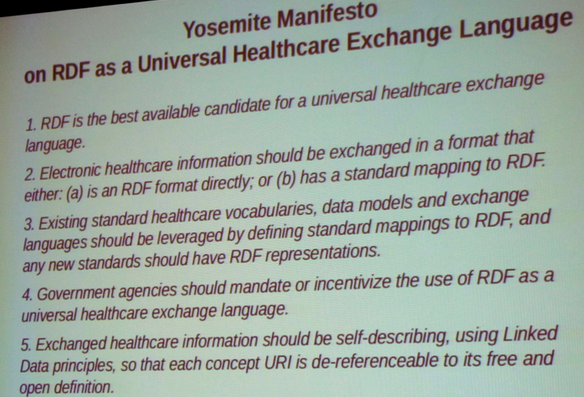Bert Verhees, a colleague from the openEHR community made this post recently to the openehr-technical mailing list:
OpenEHR is not a standard, it is a formal specification. http://www.iso.org/iso/home/standards.htm ISO, What is a standard: "A standard is a document that provides requirements, specifications, guidelines or characteristics that can be used consistently to ensure that materials, products, processes and services are fit for their purpose."
I’ve grappled with this question many times over the last 20 years. My current thinking is as follows.





